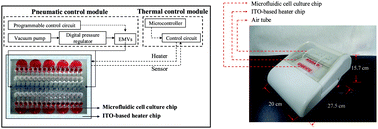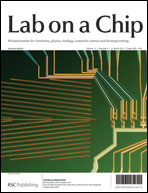An integrated microfluidic cell culture system for high-throughput perfusion three-dimensional cell culture-based assays: effect of cell culture model on the results of chemosensitivity assays†
Abstract
Although microfluidic cell culture systems are versatile tools for cellular assays, their use has yet to set in motion an evolutionary shift away from conventional cell culture methods. This situation is mainly due to technical hurdles: the operational barriers to the end-users, the lack of compatible detection schemes capable of reading out the results of a microfluidic-based cellular assay, and the lack of fundamental data to bridge the gap between microfluidic and conventional cell culture models. To address these issues, we propose a high-throughput, perfusion, three-dimensional (3-D) microfluidic cell culture system encompassing 30 microbioreactors. This integrated system not only aims to provide a user-friendly cell culture tool for biologists to perform assays but also to enable them to obtain precise data. Its technical features include (i) integration of a heater chip based on transparent indium tin oxide glass, providing stable thermal conditions for cell culturing; (ii) a microscale 3-D culture sample loading scheme that is both efficient and precise; (iii) a non-mechanical pneumatically driven multiplex medium perfusion mechanism; and (iv) a microplate reader–compatible waste medium collector array for the subsequent high throughput bioassays. In this study, we found that the 3-D culture sample loading method provided uniform sample loading [coefficient of variation (


 Please wait while we load your content...
Please wait while we load your content...